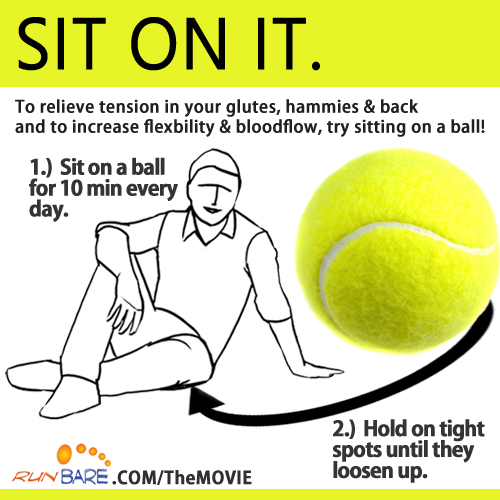Stretching for Performance & Health
 It’s springtime in North America! A time to head outside, be more active, start getting back into shape - and it might be the time you decide to try barefoot running.
It’s springtime in North America! A time to head outside, be more active, start getting back into shape - and it might be the time you decide to try barefoot running.
Whatever your activity or fitness preference, as you start doing more and gaining speed, your muscles will begin to get tight. When it’s barefoot running or running in your FiveFingers, that means tight calves and Achilles. One of the greatest secrets to a fast, safe recovery is stretching. Stretching relaxes muscles. This allows proper blood flow for muscles to receive the nutrients and oxygen they need to recover. Proper, regular stretching repairs muscle damage and helps muscles grow back stronger both in between workouts and as you sleep. The trick is doing your stretching properly, or your well-intentioned stretches may cause an injury. Studies show that traditional stretching (such as standing against a wall, planting your foot on the ground and horking into your calf) done when your muscles are cold, such as a before a workout, not only aren’t very effective, but may cause injuries too. Why? Because stretches only reach the attachment points of the muscles (where the stretches themselves cause a lot of stress and strain) and don’t get through to the belly of the muscle. The best way to reach the belly of your muscle is to use a foam roll or tennis ball, two training tools I never leave home without. If you think of the human body as a series of strings, like a marionette, you’ll see that each body part pulls on the next. This is why you can get a massage on your neck, and suddenly feel it pulling on a foot. Everything is attached, and each part is connected to the next. As a result, we need to go hunting for the tightest spots in the body to relax the body as a whole in order to prevent strain on your weakest link (be it a foot, a knee, or glute). Your problem area may feel tight, but it likely isn’t the problem - that one muscle pulling on the next, then pulling on the next is causing the problem. I recommend beginning with a foam roll after every workout, or in the evenings after a five minute warmup (stretching before bedtime is a great way to promote recovery). Gently ease your bodyweight into the foam roll, then move or roll along slowly, looking for any tight spots. When you feel one, stay there for a minute (letting the tightness melt away) before moving on to the next spot. Begin with your calves and Achilles, working up over the quads, taking lengthy care of your IT Bands (the rope like connective tissue that runs from your knees to your hips, and can pull both into your back and your feet), and ending with your hamstrings. As a runner or barefoot runner, I’d pay particular attention to rolling out over the calves, Achilles, and the IT band. You’ll quickly get the hang of it and feel where needs to be stretched. Listen to your body and take your time.
I’d additionally get a tennis ball (dog and man’s best friend?) and use this as well. Almost all of the muscles of our legs attach beneath our glutes (and pull up into our back). By simply sitting on a tennis ball and looking for tight spots, you’ll begin to reduce tension in your back, legs, and even your feet. My favorite for this is just beneath my pelvis where my hamstring attaches. When I use a tennis ball on this area I feel tension leaving my plantar fascia and my feet. Try it and you’ll see! Use a tennis ball and foam roll at least once a day when your muscles are warm and you’ll find yourself looser, running faster, less prone to injury, and feeling better in the morning. They help promote recovery, help you grow faster stronger, and keep you healthier for all of your activities. Have fun with this, and I guarantee you’ll see the difference!
- michael's blog
- Log in to post comments
